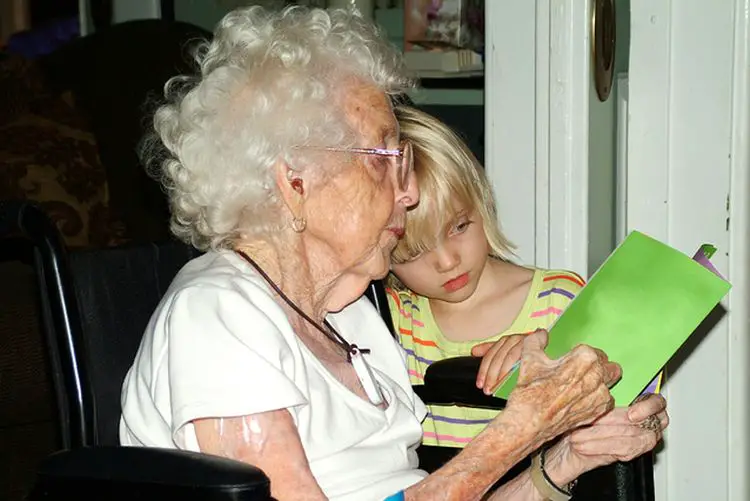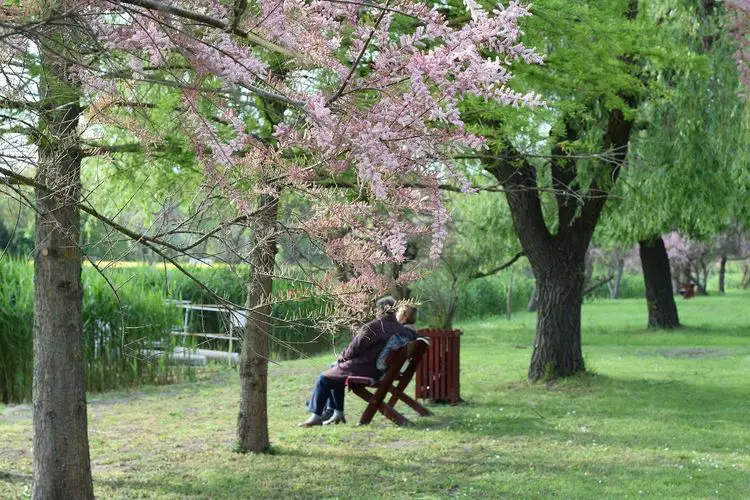Let’s take a look at daily life in a retirement community…
It’s time. You’ve officially retired or are about to retire from your long career. You’ve talked to your adult children, you’re ready to move out of your home because there’s just too much to take care of, expending time and energy that at this point you feel the need to conserve and maximize. Perhaps your spouse is with you and ready to do the same thing — move into a retirement community.
There’s some general information about such places to be gleaned from popular culture, friends’ accounts of their experience, and any sort of brochure or information kit about retirement, residential care, and assisted living you’ve received from relatives who want to be helpful at this time in your life. But what is daily life in a retirement community really like? It’s a life-changing decision to become a resident at one, so you want to know as much as possible.
In this article, we’ll examine the ins and outs of retirement-community living. And though many retirement communities don’t offer “aging in place” options like the ability to transfer from independent living to assisted care within the same community, or things like a pharmacy and/or clinic on site, more and more communities are indeed offering those things and more. They’re called Continuing Care Retirement Communities (CCRCs). Let’s find out more.
What Is a Continuing-Care Retirement Community?
To understand daily life in a retirement community that qualifies as “Continuing Care,” a good place to start is a definition. According to the AARP, “CCRCs or life plan communities are a long-term care option for older people who want to stay in the same place through different phases of the aging process.”
That’s what we mean by “aging in place.” Throughout your early retirement, into your twilight years and even convalescence, at a CCRC you’ll have the benefit of getting to know fellow residents, staff members, and administrators and attached personnel, and develop those relationships without having to start over in a brand-new place simply because, for example, you need a living situation with more ready access to medical services and assistance. This is important because consistent and lively socialization has a positive effect on health — both mental and physical.
What is Daily Life Like in a Retirement Community?
Residents of a retirement community can expect activities to facilitate socialization, on-site services for medical care, unique aspects of housing catered to seniors, and plenty of staff to assist with resident needs.
Here’s where we break down the experience into sections, since there’s a lot to cover:
1. Socialization
- Planned Events — Across individual communities, there’s a wide range in the number and quality of planned social events, from those facilities that are completely laissez-faire to those that have gatherings every day and night for games, movies, residents’ feedback groups on how the facility should be run, and more. One grandmother I know who recently bought into a CCRC said she was overjoyed to find an energetic Tuesday-night canasta group where she’s already met a BFF.
- Common Areas — These can range from a simple cafeteria to multiple fully appointed living rooms with “every channel” large screen TV’s, to open gyms, even swimming pools with lane sign-ups by the hour and aqua-cise classes. We think it’s safe to say that most retirement-community administrators are well aware that it’s a good thing to have a gathering place where residents can spend time in each other’s company. It goes without saying, isolation isn’t healthy.
- Outings — Again, this amenity can be non-existent, and at the other end of the spectrum, the staff at a CCRC could load up a van every other day to bring residents to the movies, the theater, museums, the symphony and other concerts, you name it. You may be used to having your own car and the social itinerary to go with it, but what happens when you can no longer drive? You’ll still want to go out on the town from time to time, and planned trips chaperoned by facility staff can be just the ticket.
2. Medical Care
- Pharmacy On-Site — As mentioned above, accessible prescriptions will be a top priority for most retirees, and when there’s a pharmacy right in your retirement community, that’s one less trip out per week or month that you have to worry about. Even if you normally had your prescriptions delivered before, the proximity of a community-based pharmacy can be a factor in your ongoing ability to feel relaxed and safe.
- Access to a Physician — Once again, peace of mind goes a long way toward a good quality of life. You can’t concentrate on your grandkids when you’re constantly worried about your physical health issues and whether or not they’re being properly addressed. When a CCRC has a doctor (or doctors) on the premises, you don’t have to worry about driving into town for appointments and all the hassle that can entail. Yes, you pay for the convenience when you buy into the CCRC, but most retirees we know in that particular situation would tell you that every penny is money well spent.
- Specialized Care — We know that the amount of care you need increases depending on what “level” of the CCRC you’re currently enrolled in — from independent living to assisted living to nursing care — but, if you find the right community, you may also be granted access to the special care that Alzheimer’s disease and other deterioration conditions require. It’s one more thing that varies from community to community, but it is out there, to the relief of many.
3. Features of Housing
- Well-Appointed Quarters — If you plan on living in an independent apartment for your first few years at a Continuing Care Retirement Community, you’ll want to make sure that your home has appliances like a dishwasher and a washing machine and dryer, as well as easy access to outdoor spaces. Then, once you’re in assisted living, you’ll want extras like safety bars in the bathroom and flooring that’s non-slip. Most CCRC’s pay attention to features like these for their residents, but it’s like anything else — you really get what you pay for.
- Private Space for Elders — When you do start to require more assistance with daily activities, you still won’t want to lose out on privacy. The best CCRC’s offer assisted-living and nursing-care rooms that have their own private bath, and — this is important to a lot of people — a bedroom space of your own that you don’t have to share with a roommate. You left that behind in your 30s, right? For a long time, the benefits of privacy — or the adverse effects of losing it — were overlooked in the field of psychology. But no more. Any professional is going to be on your side when you want to claim your private space.
- General Safety Measures — In a way, you can tell the quality of a CCRC by the safety measures it seems to consider important. Fire extinguishers and alarms should be conspicuously placed, emergency exits also must be clearly marked and free of clutter in the area, and sprinklers should be maintained on a regular basis. It can feel intrusive when a scheduled crew comes in to check the sprinklers, but the payback is more peace of mind — the thing you wanted when you chose to retire to a community facility. Pets may or may not be allowed depending on the level of care you need.

4. Community Staff
- Friendliness and Courtesy — Sometimes and in some situations, you will require staff members at your retirement community to perform tasks which are quite intimate, involving close contact. Depending on the level of care needed, it can range from nurses to Personal Care Aides. The best professionals make you feel at ease when doing these things — from taking your blood pressure and temperature to assisting you with bathroom duties, and everything in between — and can even make it fun by adding a little humor or with that extra caring touch. More than that, it’s the staff member who truly enjoys getting to know you that makes all the difference. We hope you meet many professionals in this category.
- Professional Credentials — It should go without saying, but you certainly don’t want to be living in a “training hospital” or the equivalent thereof. It’s important — and the general trend is positive with regard to it being common — that anyone and everyone involved in your care has near-maximum levels of education and experience. Don’t be afraid to ask. It’s your money, and your life.
- Admin Availability — Inevitably, there’s going to be a time where you need to speak with the office staff — the director and other administrators — of your community. Will they be available? This is an important question to ask, and to find the answers to, well beforehand. Go in with your eyes open, and you should be fine.
Closing Thoughts
I hope you now have a well-rounded glimpse at daily life in a retirement home, and that it helps you make a decision on whether you want to live in a CCRC or not, and if so, which one. You’ll notice the conspicuous absence of a discussion of the cost of these communities — let’s just say the numbers are high. Odds are you are already aware of this, however.
That aside, we wish you the absolute best, and we want to hear your stories. Drop a note in the comments below. Let’s keep the conversation going!


